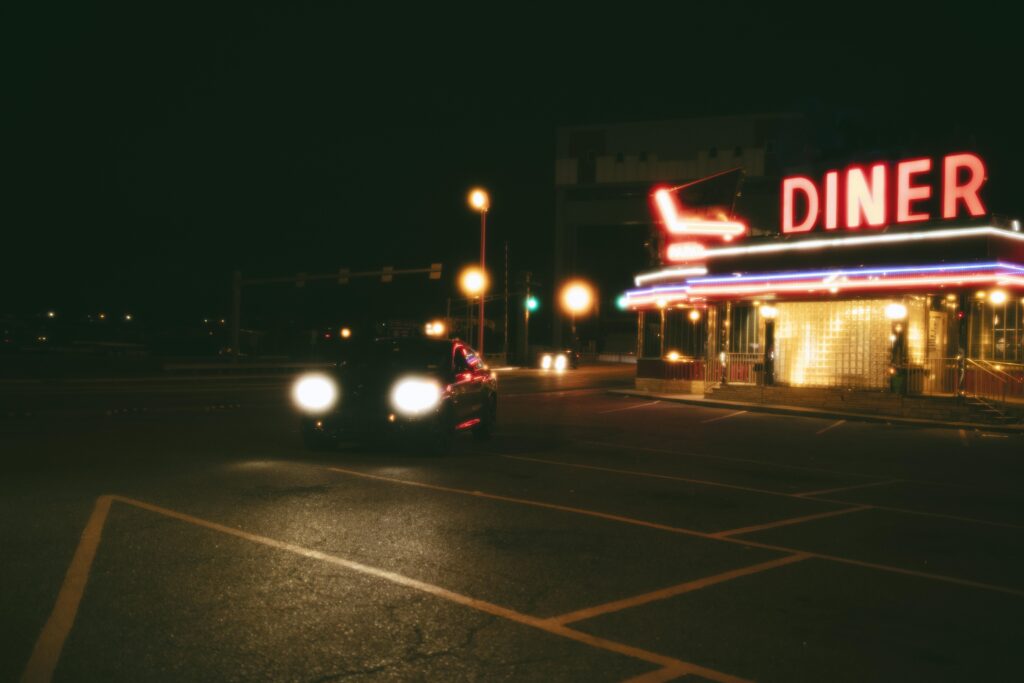Geschäftsplanung und -strategie, Finanzmodelle
Diner-Geschäftsmodell: Kosten, Umsatzpotenzial und Rentabilität
A diner operates in a volume-based, thin-margin segment where profitability depends on table turnover, Menütechnik, Und tight labor-to-revenue ratios. While CapEx is moderate, the financial model relies on efficient kitchen throughput, disciplined ingredient cost control, and layered daypart monetization (breakfast, lunch, late night). Successful operators focus on predictable traffic patterns, low waste, and staff efficiency to maintain profitability.
Asset-Konfiguration
CapEx is primarily directed toward kitchen infrastructure, seating, and compliance buildout. A typical diner spans 1,200 to 3,000 sq. ft., with a balance of booth seating, counter space, and back-of-house prep.
| Anlagekategorie | Kostenspanne (USD) | Hinweise |
|---|---|---|
| Kitchen Equipment (grill, fryer, hood) | 60,000 to 100,000 | Flat-top grills, fryers, ovens, refrigeration, ventilation |
| Dining Area Furniture and Fixtures | 20,000 to 40,000 | Booths, tables, stools, counters |
| POS, KDS, and Ordering Systems | 10.000 bis 15.000 | Payment processing, kitchen display, inventory sync |
| Branding, Beschilderung, Beleuchtung | 10.000 bis 20.000 | Interior design, menu boards, external visibility |
| Permits, Licenses, and Initial Inventory | 10.000 bis 20.000 | Health, food handling, dry/fresh stock |
Gesamtkapitalaufwand: 110,000 to 195,000 USD, with location condition and kitchen size driving variation.
Erlösmodell
Revenue is transactional and highly sensitive to location, seating capacity, and hours of operation. Key drivers include breakfast throughput, combo pricing, Und average ticket optimization through sides and beverages.
Annual Revenue Potential for a 2,000 sq. ft. Diner (60 Seats)
| Einnahmequelle | Volumenannahme | Jahresumsatz (USD) |
|---|---|---|
| Breakfast and Brunch | 60 covers/day at 14 USD avg. | 306,600 |
| Lunch and Dinner Service | 60 covers/day at 17 USD avg. | 372,300 |
| Coffee, Pastries, To-Go | 500 per week avg. | 26,000 |
| Desserts and Add-Ons | 300 per week avg. | 15,600 |
| Weekend Late-Night Traffic | 250 per week avg. | 13,000 |
| Gesamt | 733,500 |
Well-located diners with 16–18 hours/day operation and robust weekend business can exceed 1 million USD/year. Smaller suburban locations or short-hour models often cap around 400,000 to 600,000 USD/year.
Betriebskosten
COGS is variable by category, typically 30 to 35 percent. Labor, rent, and utilities are heavy fixed components. Profitability is built through tight prep controls, low spoilage, Und predictable staffing patterns.
| Kostenkategorie | Jährliche Kostenspanne (USD) |
|---|---|
| Kosten der verkauften Waren | 220,000 to 255,000 |
| Personallöhne und Gehaltsabrechnung | 200,000 to 240,000 |
| Miete, Nebenkosten, Versicherung | 100,000 to 130,000 |
| Repairs, Maintenance, Cleaning | 25,000 to 40,000 |
| POS, Delivery Platforms, Admin | 15.000 bis 20.000 |
| Marketing and Community Promotions | 10.000 bis 15.000 |
| Gesamtbetriebskosten | 570,000 to 700,000 |
EBITDA = 733,500 – 570,000 to 700,000 = 33,500 to 163,500 USD
EBITDA-Marge = 4.6% to 22.3%
Operators that manage staffing and food cost tightly can maintain 20+ percent margins. Locations with overstaffing, spoilage, or underutilized hours fall into low double digits.
Rentabilitätsstrategien
Profitability in a diner depends on daypart monetization, prep standardization, and table velocity.
First, maximize breakfast throughput, the highest-margin period with the lowest ingredient cost (eggs, pancakes, coffee). Serve structured combos and maintain prep time under 8 minutes. Target turns of 3x per table during breakfast rush.
Second, control food cost by engineering the menu for margin. Use cross-utilization of ingredients across dishes, highlight high-margin items (omelets, sides, house drinks), and eliminate low-turnover SKUs. Aim to keep food cost under 32 percent of revenue.
Third, monitor labor cost as a percentage of sales daily. Schedule flexibly around peak periods, consolidate back-of-house roles, and implement shared tips across front-of-house to optimize coverage.
Use loyalty programs and digital ordering to increase LTV. Offer weekday breakfast cards, holiday brunch promotions, and partner with delivery platforms during off-peak hours to fill capacity.
Finally, introduce merchandise (mugs, shirts, pantry items) Und event nights (local bands, trivia, late-night specials) to boost spend per visit and diversify revenue beyond core food sales.
Na und?
A diner is not just a restaurant – it is a cost-structured, volume-optimized service operation. Profitability depends on throughput, ingredient yield, and labor precision—not just ambiance or menu breadth. Operators who engineer for table turns, margin stack via combos, and drive retention through neighborhood loyalty can sustain 20+ percent EBITDA margins An over 700,000 USD in annual revenue, mit CapEx under 200,000 USD.

Are you considering opening your Diner business? Download the comprehensive Diner Vorlage für ein Geschäftsfinanzmodell aus BLÄTTER.MARKT to simplify your financial planning. This tool will help you forecast costs, revenue, and potential profits, making securing funding and planning for success for your Diner business easier.



